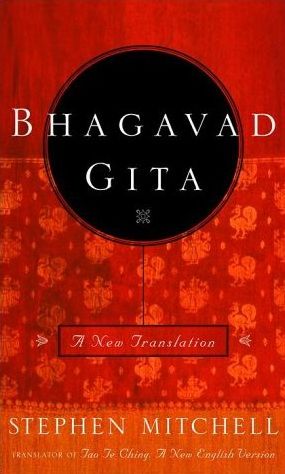(Complete contents at
Gita in a Nutshell: Big Ideas and Best Quotations.
For notice of each weekly blog,
please join our Facebook group.)
Many people who love the Bhagavad Gita were frustrated or turned off when they first tried to read it.
One reason is often the translation. There are many versions that are very hard to read—stilted, unnatural English, and lots of Sanskrit terms that have you jumping down to the footnotes every other word. Another problem is the commentary, which is sometimes harder to understand than the text itself and can get very technical. (This is all fine for experienced readers, by the way.)
The Mitchell version, thankfully, doesn’t have either of these problems. It reads easily and naturally, with no footnotes at all. And the commentary is thoroughly enlightening.
But it still has a third common problem which comes from the content itself. Within a few pages of starting the Gita, the reader is told:
–Women who are allowed to marry outside their caste are “corrupt”. (D)
–If the caste system is violated, society will collapse and those responsible will suffer in hell. (D)
–Men who refuse to fight will be disgraced forever as unmanly cowards. (D)
–Reincarnation will be our reward or punishment for our actions. (M)
–God thinks it’s a great idea to cajole the hero into fighting a bloody war against his relatives. (M)
–We should be indifferent when someone dies. (E)
–There is no real distinction between good and evil. (E)
–We should cut ourselves off from all sensual desires and pleasures. (E)
Is it any wonder that many readers stop right there and say, “I don’t need this. I’m going to find something more uplifting to read”? It certainly doesn’t live up to the promise of “Falling Head-Over-Heels-In-Love With The Universe”.
It takes a little effort and insight to be able to handle these and other jarring issues that come up in the text. Eventually, for each unacceptable or repugnant idea, you have three choices:
1) Decide to simply ignore it. (Mitchell is right up front about this in a way few other translations are. On page 209 he writes, “the Gita contains passages that are culture-bound and should be disregarded by readers who are serious about its deeper teachings”, and he goes on to list the specific stanzas this applies to.)
2) Turn it into a metaphor. For example, war can be seen as a metaphor for whatever big challenges we face in life.
3) Further explain the troublesome idea in a way that it eventually turns out to make sense.
Each of you will have a different way to work this out. There is no correct way. For example, some people believe in literal reincarnation and some do not. The Gita hits us hard with a lot of these problem passages early on. The effort to overcome them will be richly rewarded. (I’ve coded my own personal decisions on the issues above with “D” for “Disregard”, “M” for “turn into a Metaphor”, and “E” for “makes sense when Explained”. But that’s just me.)
You’ll be encouraged to know that Arjuna, at the beginning of chapter 3, pretty much says to Krishna, “Are you crazy or something”. He has some of the the same problems we do!
What did you find upsetting or difficult when you first started reading the Gita?
How did you choose to deal with it?
(This blog originally appeared as Gita Talk #4, which attracted 1521 views and 172 comments, the 4th most commented ever on Elephant, and is still open for reading and response.)
Previous:
#4: Each of Us is already Infinitely Wondrous
(Divine, if you prefer)Next:
#6: Gandhi’s Bible or a Call to War?(Complete contents at
Gita in a Nutshell: Big Ideas and Best Quotations
To receive notice of each weekly blog,
please join our Facebook group.)







Read 24 comments and reply